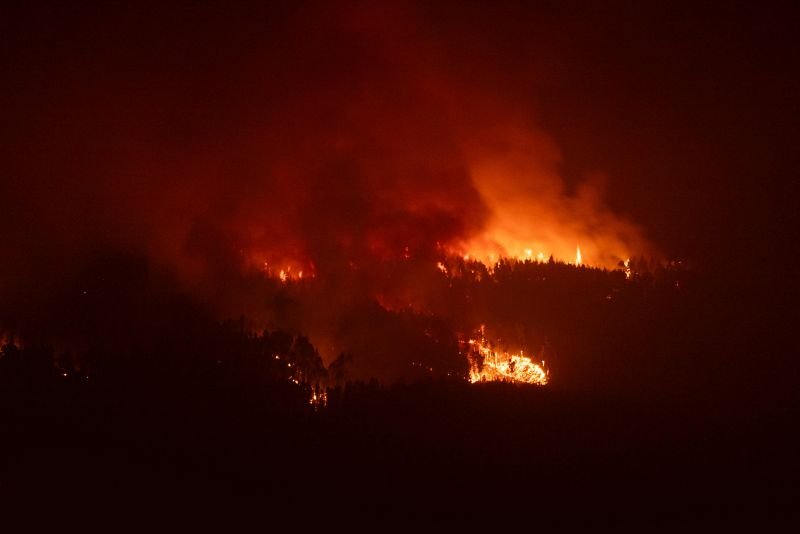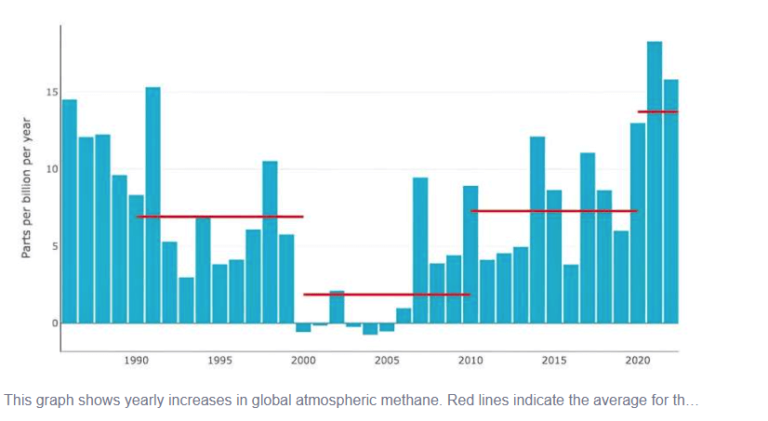Its time to talk about fire and climate change
Major new report quantifies the effect of fires, turning forests from carbon sinks to carbon sources
It is intuitive that fires, particularly forest fires increase as the world heats up. This intuition is borne out in a recent report, covered in phys.org which finds that in this century alone, emissions from fires have nearly trebled, especially in northern latitudes, ironically, in part due to the larger spread of forests resulting from carbon fertilisation from accumulated carbon emissions in the atmosphere.
The fires are triggered, again unsurprisingly, from hotter and drier conditions occurring more regularly turning more forest area into perfect tinderwood as seen spectacularly in the massive forest fires in Canada in 2023 where millions of hectares burnt (approximately the size of Ireland) with thick smoke reaching across the broad width of the country and the carbon released was almost 4 times the total amount of global aviation.
The forests in North America and Siberia are somewhat different to the fires in the Amazon and other parts of the tropics where they are often deliberate set to clear lands and have been a major contributor to deforestation overall. It is not simply a matter of frequency of the fires but also the area of forest affected threatening cities and whole regions relatively quickly as seen in Greece and the treat to Athens in 2024 and their intensity with flames rising more than 25 meters (80 feet) into the air as reported in that particular conflagration.
Not only are these large fires devastating to all the wildlife that cannot escape and are burnt in their millions; clearing large areas of all larger life but they also reduce the carbon capture effect of forests, planted and preserved as one part of the critical solutions to a heating world. Doubly so, as the the carbon store is lost and the carbon stored is released.
Nature Article – Fire weakens land carbon sinks sooner than expected
In a major new report published in Nature, Fire weakens land carbon sinks before 1.5 °C | Nature Geoscience in 2024, the authors have for the first time factored the impact of fires on the eco-system function that forests provide in drawing carbon dioxide from the atmosphere. Forests as noted earlier are affected through climate change in a number of different directions – the increased CO2 in the atmosphere increases the expansion of forests into new areas in colder regions of the northern hemisphere albeit the actual coverage in the new areas is reduced due to increased drought and pestilence from disease and insect attack in a heating world.
The article reports on how Intergovernmental Panel on Climate Change in its 2018 Special Report on Global Warming of 1.5 degrees initially estimated the impact of permafrost loss in the Arctic at 100Gt . However, as the report states, this did not account effectively for the impact of the additional (‘positive’) feedback of forest fire. Overall it estimates that the further factor of fire reduces the remaining carbon budget for 1.5 degrees warming by 25 Gt CO2 and reduces the 2 degrees budget by 64 Gt CO2, which is estimated as between 4 and 6% of the total remaining budgets in each case. These are significant reductions in the context of ever shrinking carbon budgets accounted for by positive feedback effect of a heating world.
The report finds the forest fire burnt area increases between 15 to 20% in Europe and by 12 to 20% in Northern America, as experienced in the major fires impacting these regions in the past number year. The paper indicates how this advances the understanding of fire impacts on ecosystems for different levels of global warming and related carbon budgets. Based on the models outlined, the Report calculates that fire begins to impact total global tree cover and consequently global carbon storage at just 1.07 degrees warming meaning that the world has already crossed that line where fire now has a meaningful negative impact on the global forest carbon sink.
The findings as well as calling further attention to the poorly quantified role of positive, reinforcing feedbacks in further reducing the remaining carbon budgets (see context article linked below) also adds further doubt on the notion of carbon and global heating overshoot. As we know, most climate models rely on such carbon overshoot and extraction to reach less dangerous heating outcomes to make up for our inability to reduce emissions sufficiently in relevant timescales. However as the article emphasises, more frequent, widespread and intense forest fires in a hotter world actually weakens the ability of the Earth’s forests to drawdown that excess carbon from the atmosphere making it harder to come back from an overshoot and bring the planet back to cooler conditions.
Carbon is invisible and carbon budgets are based on abstract science arithmetic, however the effects of a hotter planet are very real and well understood as we experience it in our own lives. This article helps us to connect the recent experience of large and frequent forest fires with the underlying science in a very direct and worrying manner. One more demonstration of the connected world we live in and which we trash to our peril.






